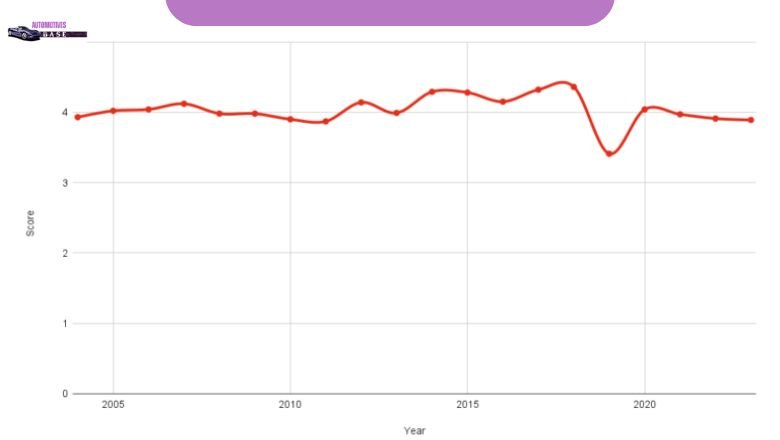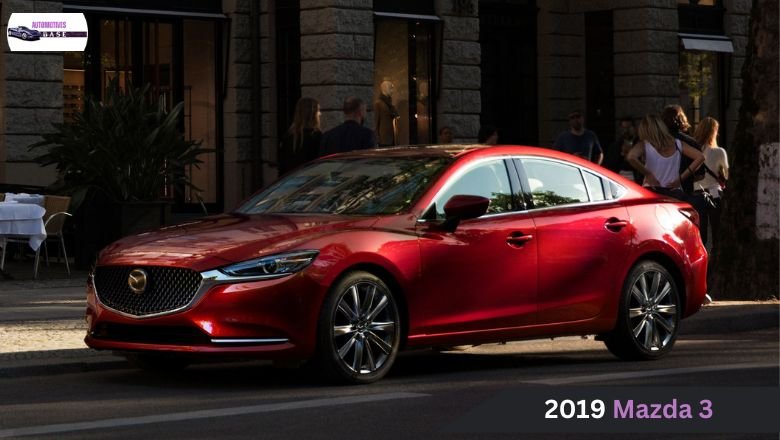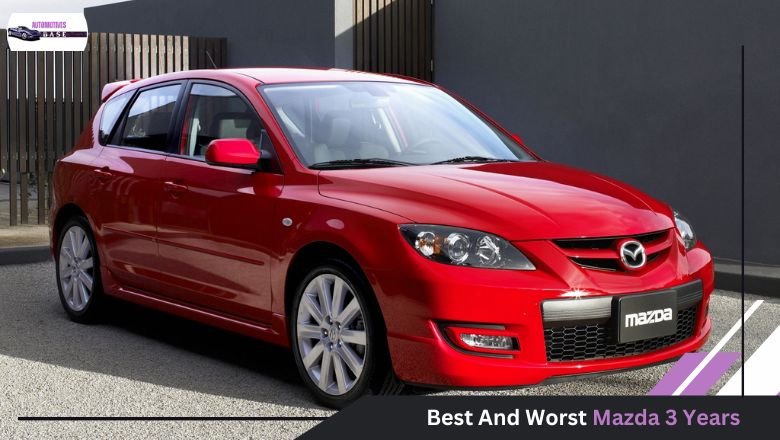Delve into the world from 2004 to the present day, uncovering the best and worst Mazda 3 years in this guide. Through research and analysis utilizing data from esteemed automotive authorities like NHTSA and JD Power, I will unveil the standout performers and cautionary tales within each Mazda 3 generation. From reliability rankings to common issues, recalls, owner feedback, and resale values, this article is your roadmap to navigating the maze of Mazda 3 options with confidence.
Mazda 3 Generations
The Mazda 3 has evolved through several generations since its debut in 2004, captivating drivers with its design and performance. Among the best years for the Mazda 3 are the early models from 2004 to 2008, known for their reliability and engaging driving experience. The worst year for the Mazda 3 is considered to be 2010, plagued by issues such as rust problems and electrical issues.
The second generation of the Mazda 3 brought significant improvements in technology and fuel efficiency. This period saw an increase in features and refinement, making it a desirable choice for many drivers. Moving on to the latest generation, starting in 2019, the Mazda 3 continues to impress with its sleek design and advanced safety features.
Understanding the different generations of the Mazda 3 can help you choose a model that best suits your preferences and needs. Paying attention to details such as features, performance, and reliability will ensure that you make a well-informed decision when selecting a Mazda 3.
Mazda 3 Best, Neutral, and Worst Years
We have conducted a thorough analysis to determine the best, neutral, and worst years of the Mazda 3. Our evaluations are based on a range of factors, such as owner-reported reliability, annual maintenance costs, safety ratings, Consumer Reports scores, NHTSA recalls, and more.
By considering data from various sources, including Edmunds, JD Power, Kelley Blue Book, Vehicle History, and Cars.com, we aim to provide a comprehensive overview for prospective buyers.
The resulting graph will present a visual representation that amalgamates all these ratings into an easy-to-understand format. This detailed categorization will help consumers make informed decisions when purchasing a Mazda 3 based on its performance across different years.

Neutral Years in the automotive world are those that neither stand out for excellence nor fall behind in terms of performance across key metrics. Factors such as NHTSA recalls have a direct impact on a car’s reliability score, influencing consumer perception. A higher number of complaints, recalls, and safety-related investigations can signal potential issues, eroding confidence in the vehicle’s reliability. These factors play a crucial role in determining how reliable a car is perceived to be by consumers.
We consider these neutral years, where overall performance remains steady without any significant spikes or declines. This stability indicates a balanced performance across various aspects of the vehicle’s reliability and safety features. While not noteworthy for exceptional achievements, neutral years are still important as they provide insight into how consistent a vehicle’s performance has been over time.
Best And Worst Mazda 3 Years, 1st Generation (2004–2009)
The first generation of the Mazda 3 quickly gained popularity for its sleek design and impressive performance capabilities. Mazda made refinements to the car, culminating in the post-facelift models of 2008 and 2009. These later models are widely touted as the best years for the Mazda 3 first generation due to their improved features and overall reliability.

Early models, such as those from 2004 to 2006, are considered less desirable in this generation. Issues with build quality and potential mechanical problems have been reported with these earlier versions. It is advisable for buyers seeking a used Mazda 3 from this generation to focus on the later model years for a more satisfying ownership experience.
The Best Years: 2008, 2009
The best years for the Mazda 3 are considered to be 2008 and 2009 due to their higher Consumer Reports reliability scores. In particular, the 2008 model introduced a Sport trim with a powerful 2.3L MZR engine producing 156 horsepower. This engine could be paired with either a five-speed manual or automatic transmission, offering decent fuel economy of 17 city and 35 highway mpg.
Some owners reported issues with the tire pressure monitoring system and valve stem leaks leading to flat tires. The overall features, like an advanced audio system and safety features such as front-side and side-curtain airbags, contributed to driver satisfaction. The expanded features in these years made them stand out in terms of both driver enjoyment and reliability.
The Neutral Years: 2007
In 2007, the Mazda 3 stood out for its impressive features and powertrain choices, including a 2.0L MZR LF-VD engine and a 2.3L option. These engines provided good performance, with horsepower ranging from 148 to 156. The introduction of different trims like the i and s versions offered consumers more options, such as manual or automatic transmission.
The 2007 Mazda 3 faced issues with its power steering system, leading to a recall due to concerns about potential loss of power steering assist. This problem highlighted the importance of safety in automotive design and manufacturing. During this period, the Mazda 3 remained popular among compact car enthusiasts due to its overall performance and versatility.
The Worst Years: 2004, 2005, 2006
The years 2004, 2005, and 2006 are considered the worst for the Mazda 3 in terms of reliability, with low ratings on Vehicle History. The pre-facelift models from these years had consistent issues that made them less trustworthy among owners. Problems with the airbag system were prevalent in the 2004 Mazda 3, leading to concerns about safety during collisions.
Engine troubles such as stalling and oil leakage were also common, posing risks to both performance and safety. The subsequent models in 2005 and 2006 didn’t offer much improvement, with complaints about power steering failures and suspension problems affecting the driving quality. Owners should be cautious when considering purchasing a Mazda 3 from these early years to avoid potential headaches down the road.
Best And Worst Mazda 3 Years, 2nd Generation (2010–2013)
The second generation of the Mazda 3 marked a significant leap forward for the compact car in terms of design and technology. The years 2012 and 2013 stood out as the best periods for the Mazda 3 during this generation, showcasing improved features and overall performance. These models boasted enhanced driving dynamics and updated technological advancements that pleased many customers.

The initial years of 2010 and 2011 experienced issues with dashboard materials that were prone to melting under certain conditions. This became a notable drawback for these model years, prompting buyers to be cautious when considering them. These early years still retained the core attributes that made the Mazda 3 popular among drivers seeking an engaging driving experience.
The Best Years: 2012, 2013
In the years 2012 and 2013, Mazda introduced the second generation of the Mazda 3, marking a significant leap forward with the integration of their innovative Sky Activ technology. This advancement brought about exceptional gas mileage and reliability, making these years stand out as the best for this model.
The introduction of the 2.0L Sky Activ-G engine provided impressive power with 155 horsepower and 148 lb-ft of torque. Mazda delivered on its promise of improved fuel efficiency, offering up to 28 mpg in the city and an impressive 40 mpg on the highway without compromising on performance.
The driving experience was further enhanced by the availability of two transmission options: a 6-speed manual and a 6-speed automatic, both boasting responsive and smooth shifting due to the SkyActiv technology. Enhancements included a more user-friendly tech interface and navigation system, catering to modern consumer needs. By standardizing a USB port across all trims in the 2013 model, Mazda showcased a commitment to staying current with technological trends.
The Worst Years: 2010, 2011
The years 2010 and 2011 are considered the worst for Mazda 3 due to common issues with dashboard and tire inflation valve stem. The 2010 model suffered from a melting dashboard problem, causing degradation of material and sticky residue. This affected visibility and driving experience, leading to a class-action lawsuit.
Motor mount problems and troublesome seats were also prevalent in this year’s model, resulting in recalls for these issues. In 2011, similar challenges persisted with the dashboard and tire valve stem, making it another year to avoid when purchasing a Mazda 3. These issues significantly impacted the overall reliability and satisfaction with these particular models.
The 2011 Mazda 3 retained many of the design elements and features introduced in the previous year. Some persistent issues caused dissatisfaction among owners. A notable problem was the unreliability of tire inflation valve stems, which frequently failed, leading to sudden tire deflation incidents.
Certain models still exhibited dashboard-related glitches that affected the user experience and functionality. These unresolved issues contributed to customer dissatisfaction with an otherwise well-regarded vehicle model. Moving forward, Mazda needed to address these concerns to maintain its reputation for quality and reliability in the automotive market.
Best And Worst Mazda 3 Years, 3rd Generation (2014-2018)
The Mazda 3’s third generation, spanning from 2014 to 2018, witnessed significant improvements in both design and technology. Among these years, 2017 and 2018 stand out as some of the best for the Mazda 3, offering enhanced reliability and performance. These models showcased a refined exterior, updated interiors, and advanced safety features, making them top choices for consumers seeking a reliable compact car.

The earlier years of the generation, particularly 2014 and 2015, experienced more issues and drawbacks compared to their successors. Problems like uneven tire wear and suspension concerns plagued these models, leading to lower overall satisfaction among owners. It is generally recommended to avoid these early-year releases when considering a Mazda 3 from this generation.
The Best Years: 2017, 2018
The best years to purchase a used Mazda 3 are 2017 and 2018 due to their outstanding reliability and owner satisfaction scores from Vehicle History, Cars.com, and Consumer Reports. These years feature the 2.0L and 2.5L Sky Activ-G petrol engines, with the latter providing a more powerful driving experience with 184 horsepower and 185 lb-ft of torque. The available transmissions include a 6-speed manual or a 6-speed automatic for both engine options.
The 2.0L engine offers decent fuel efficiency, achieving up to 28 mpg in the city and 37 mpg on the highway while delivering reliable performance. Safety features like the Smart City Brake Support system, which helps prevent frontal collisions at low speeds, come standard in these models. G-Vectoring Control technology enhances steering response by making subtle engine torque adjustments.
The Neutral Years: 2016
In 2016, the Mazda 3 represented a period of neutrality in the realm of automotive reviews. It maintained consistent powertrains from later models, but fell short in technological and safety advancements. Improvements were seen in the inclusion of standard features like a rearview camera and touchscreen interface across all trim levels.
The year was not without its challenges, as recalls arose due to issues with fuel leakages caused by a faulty Inlet Check Valve (ICV). Additionally, concerns surrounding parking brake actuator corrosion also surfaced. The Mazda 3 managed to strike a balance between positive and negative feedback during this time.
The Worst Years: 2014, 2015
The worst years for the Mazda 3 in the third generation are 2014 and 2015. These years received relatively lower Edmunds and J.D. Power scores, with owner-reported brake problems being a significant issue. Fuel leakage due to corrosion and various brake-related issues were commonly reported by owners during this period.
Recalls were issued for models equipped with the 2.5L engine and regenerative engine braking system to address concerns over unexpected engine stalling and potential power steering assist loss. Noteworthy recalls included issues like the fuel tank’s ICV failing, which could lead to fuel leaks, corroding parking brake actuators, and various braking problems that raised mechanical concerns for both potential buyers and existing owners.
Best And Worst Mazda 3 Years, 4th Generation (2019-Present)
The Mazda 3 fourth generation, spanning from 2019 to present, marks a new era for the model. With a focus on luxury and premium aesthetics, this generation represents significant advancements in design and performance. Among the years in this range, 2019 stands out as the least favorable for Mazda 3 enthusiasts due to some reported issues.

The subsequent years of 2021, 2022, and 2023 shine as the best and most reliable options within this generation. These years have garnered praise for their enhanced features, improved technology, and overall driving experience. With each passing year, Mazda has continued to refine and perfect the Mazda 3 line-up.
The Best Years: 2021, 2022, and 2023
The years 2021, 2022, and 2023 marked a peak for the Mazda 3, showcasing robust performance and a sleek design. These models featured an expanded range of powertrain options, including a new turbocharged engine that delivered impressive horsepower and torque. With up to 28 city and 37 highway mpg, fuel efficiency was a notable highlight.
The i-Activsense suite offered advanced driver-assistance features, earning the 2022 Mazda3 a Top Safety Pick award from IIHS. Some owners encountered challenges such as excessive oil consumption in the 2021 model. These years represented a significant advancement for the Mazda 3 lineup, with enhanced technology and safety features.
The Neutral Years: 2020
In 2020, the Mazda 3 maintained its focus on performance and style, staying true to the brand’s identity. The car featured a reliable 2.5-liter, 4-cylinder engine that delivered both power and fuel efficiency. It faced challenges with recalls during this model year. One issue involved front brake caliper bolts that were prone to loosening and potentially detaching, posing a safety hazard.
Recall addressed the intermittent activation of the emergency brakes, highlighting some quality control concerns with the model. The Mazda 3 still held its own in the competitive automotive market. Drivers appreciated its balanced blend of performance and aesthetics, making it a popular choice among compact car enthusiasts in 2020.
The Worst Years: 2019
The year 2019 was a challenging one for the Mazda 3, with low Consumer Reports reliability and owner satisfaction scores. Numerous NHTSA recalls were issued, addressing a range of issues from powertrain malfunctions to airbag and seatbelt indicator problems.
Some of the recalls focused on software errors that could cause the engine to stall and unexpected activations of the emergency braking system. Issues with rearview mirrors and wheel lug nuts that could loosen and fall off were also reported. 2019 marked a year to avoid for the Mazda 3 due to these concerns and recalls.
Mazda 3 Average Resale Values
Mazda 3’s average resale values through an upcoming graph that highlights its evolution over time. Since its initial launch, the Mazda 3 has consistently maintained a strong position in the resale market due to its reliability and performance.

The graph showcases any fluctuations or trends in the resale values of different Mazda 3 models. By analyzing this data, one can gain valuable insights into the overall depreciation rate and long-term value retention of the Mazda 3 in the automotive industry.
Conclusion
Best and worst Mazda 3 years has proven to be a versatile and reliable vehicle, with certain models standing out for their exceptional performance. Through our analysis, we have identified the 2013, 2017, 2018, and anticipated 2021–2023 models as the best years for the Mazda 3 due to their consistent balance of performance and reliability. Drivers seeking a dependable and capable compact car should consider these specific model years for an optimal driving experience.
FAQ`s
Is The Mazda 3 The Most Reliable Car?
The Mazda 3 is known for its impressive reliability, consistently earning high scores in major reliability ratings. According to RepairPal, it received a solid rating of 4.0 out of 5.0, placing it ninth among 36 compact cars in terms of reliability. Owners of the Mazda 3 benefit from an annual repair cost of around $433, which is significantly lower than that of other vehicles in the same category.
Is The A3 A Luxury Car?
Yes, the Audi A3 is considered a luxury car in the compact segment. It features a sleek and modern design that captures attention on the road. The interior of the A3 is well-crafted with premium materials and offers a comfortable driving experience for both the driver and passengers.

